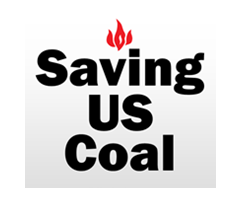The Path Forward for Coal

August 22, 2024 - We’ve had some great presentations and I’m going to summarize what we have learnt at the recent Bluefield Coal Symposium. About 200 attended the Symposium presented on August 12-14 by the Chamber of Commerce of the Two Virginias and CoalZoom.com at the Chuck Mathena Center in Princeton, WV.

Bill Reid

Chuck Mathena Center
The basic tasks of the mining engineer are first, to provide greater safety and second, to seek increased productivity. In 1983, the coal industry got below 100 fatalities in a year for the first time in its history and in 2020, there were 5 fatalities. If the industry can get from 100 to 5 fatalities, it can surely get from 5 to ZERO. This is proving difficult and we must all work harder.
Accidents are caused. They do not just happen. And because accidents are caused, they can all be prevented. We learned that Job Safety Analysis combined with Safety Rules and Safety Inspections are considered the best approach (Sole, Judge). Companies using NMA CORESafety have a 75% reduction in accidents (Krivocuka).
The second goal of the mining engineer to seek increased productivity is being achieved by highly productive longwall mining, which now accounts for 60% of underground mining, as well as advances in continuous mining, which will continue (Sherack).
Regarding the future of coal, we have noted that in 2023, global coal production reached a record high of 8.6 billion tonnes (9.46 billion U.S. tons). This was driven by Asia Pacific countries, particularly China and India. Coal Consumption also hit a new high, with China consuming over half the world’s use. According to the International Energy Agency (IEA), in 2023, China’s electricity grew 7% and India’s coal consumption for power generation grew 10%. In 2024, global coal consumption will be up 0.4% to 8.74 billion tonnes (9.61 billion U.S. tons). The U.S. must utilize all its natural resources, including coal, to remain an economic powerhouse (Manook).
In examining the future of American coal, at no time in history has coal faced so many challenges. But there are many opportunities and the industry must rise to the challenge. The Administration wants 50-52% economy-wide reduction in GHG by 2030 with net-zero emissions across the electricity sector. The biggest threat is for coal for electricity generation. Climate change concerns must be addressed and electrification of the economy is needed at an unprecedented rate.
There opportunities for coal. These include new exciting coal-to-products (Atkins); extending the life of existing power plants NOT SO FAST (Brock) and new developments with zero emissions power plants (Humphreys). Coal for steel will be needed for some time (Beakes). There are questions regarding the Omni Pleasants Power Plant Project and new legislation is being drawn up for Net-Negative CO2 Baseload Coal Power comprising a nominal 80% coal and 20% biomass with CCUS on the back end.
The EIA Short-Term Energy Outlook of July 2024 indicated that in 2024 U.S. coal production would be 509 million tons and in 2025 would be 489 million tons. The EIA forecast the following month says the 2024 forecast will be reduced by a further 10 million tons then in 2025 reduced by 15 million tons from the previous forecast.
Meanwhile, there is expected to be a massive increase in electricity requirements for AI and data centers (Bloodworth). Despite this unprecedented demand for electricity, In the years 2024 and 2025 EIA expects production to be: Appalachia 147 and 136 million tons; Interior 81 and 76 million tons: and Western 271 and 262 million tons, respectively. Coal’s share of electricity generation is forecast to be 17% and 16%. Henry Hub gas prices are expected to be 2.58 and 3.42, respectively.
The U.S. coal industry continues to make a $40 billion direct economic contribution to the Nation and a $10 billion contribution to West Virginia and Virginia. There are about 68,000 employees at coal mines including contractors. Both direct and indirect workers total 325,000. The industry will continue to make a very considerable contribution to employment and taxes in coal communities.
A strategy is needed to save coal and one was indeed provided (Humphreys).
· Protect the existing fleet – keep EPA in check
· Rebalance Federal spending – with fossil energy getting a fair share
· Enact permitting reform
· Create a level playing field with tax credit parity
· Coal can compete, if clean energy tax credits are restructured
· The election is important!
· We must utilize the 325,000 Coal Army (Friends of Coal) whose livelyhoods depend on coal.
We are blessed with a healthy mining manufacturing industry in America including: Caterpillar, Cincinnati Mine Machinery, Fletcher, Gainwell Engineering, Jenmar, Komatsu, Phillips Global, Simmons Equipment and many others with most of those represented at the Symposium. As the coal industry gets smaller some of those could have a risky future but those who have cultivated an export business are likely to survive longer. Hence, mining machinery makers, contractors, consultants, and engineering firms will continue to contribute to the industry supply chain while at the same time paying their taxes, providing employment and contributing to the economy.
We can all do something for coal. So, reach out to members of Congress and promote coal in every venue where you have the opportunity. Point out that the reliability of the grid is at risk and all-of-the-above low-emission electricity generation options are needed. Explain that climate goals can only be met with affordable reliable baseload power.
I ask everyone to stand up and fight for coal. Coal remains a vital industry for the Nation! We must never be ashamed of what we do and we must fight for our industry; fight for our coal miners, who have done so much for America; and fight for our own jobs and the future of our coal communities.
Bill Reid,
Managing Editor
CoalZoom.com

